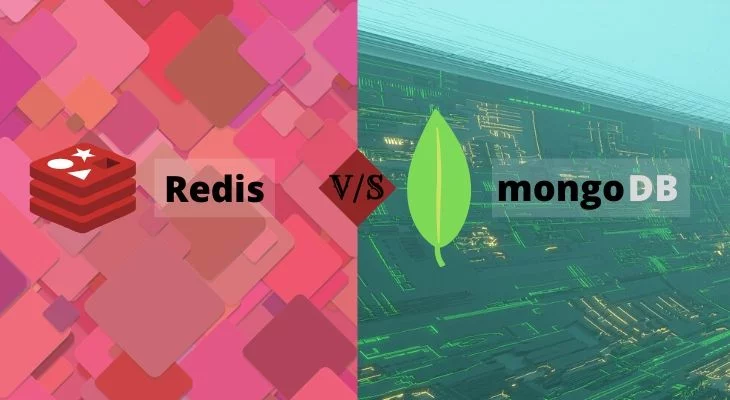With the rise in Big Data, the database of companies started to grow exponentially, and data scientists had to face slowing down of their systems with it. Most of the data was either semi-structured or unstructured, and hence it was difficult to perform data analysis straightaway.
That’s when companies started to opt for NoSQL databases instead of relational databases. NoSQL databases can easily handle a vast number of an unstructured, semi-structured, and structured database. It can also scale up without much hassle and perform to the same levels, even when scaled up.
Redis and MongoDB are two of the most popular NoSQL tools, and a lot of companies are using these tools. This blog focuses on Redis Vs. MongoDB comparison through some crucial parameters such as speed, performance, caching, memory, and sessions, etc.
Let’s take a quick look at how Redis and MongoDB compare with each other.
Redis is a key-value storage solution located at the user end, cloud, or a cluster, while MongoDB is a document-oriented storage solution that can be deployed in the cloud or servers at the user end.
As Redis can handle and execute the database faster when the database is higher as compared to MongoDB, we can say that Redis is considerably faster than MongoDB when it comes down to higher latency throughputs. But, in the case of lower latency throughputs, this story becomes entirely different. MongoDB outperforms Redis in terms of speed when dealing with lower latency throughputs.
So we can say that if you are using low latency throughputs, MongoDB will give you faster results, but on the other hand, if you are working on high-level latency throughputs, Redis becomes your go-to model if you want higher speed.
If you want to handle varying workloads, Redis proves to be a better option than MongoDB in terms of performance.
MongoDB tends to perform better than Redis while its compute memory is still available. But once MongoDB becomes CPU-bound, its performance starts to slow down gradually.
Redis performs better running at a single core than MongoDB even though Redis is single-threaded. But Redis tends to use more RAM than MongoDB to execute the same set of operations.
So we can ascertain that Redis fares better than MongoDB in terms of performance.
MongoDB is a traditional database solution with added features like data aggregation and map-reduce. On the other hand, Redis is a combination of advanced data structures and caching solutions.
MongoDB comes up with features like role-based account control (RBAC), SSL, and scale-out while there is no provision for RBAC with Redis.
It is a little challenging to implement Redis in large scale cloud deployments, but with MongoDB, you can quickly deploy the setup even in the large cloud deployments.
But, with Redis, you can easily set up the hassle-free crash solution with persistence facility; but there is no provision for persistence in the crash situation.
So, it is evident that MongoDB fares better with caching than Redis in most of the parameters.
In the case of the scaling scenario, MongoDB outperforms Redis as it supports more scaling methods and the RAM on the physical machine limits Redis. Even though you can scale with Redis, it is much comfortable to scale with MongoDB.
Redis comes with an in-memory engine which helps the tool to operate comfortably with the higher set of workloads, on the other hand, MongoDB comes up with the Percona engine which transforms the tool into a memory storage engine.
The key aim of Redis is to perform as a message broker, and on the other hand, MongoDB is a JSON powered on-disk database.
In terms of memory-based comparison, Redis fares better than MongoDB.
If you want flexibility in storing customer data, MongoDB is an ideal choice for it as you can use MongoDB's wide range of query flexibility schemes without having to create new table fields. Additionally. It comes with a powerful set of query tools, like in the case of a relational database.
Key Takeaways:
Even though two of the most popular NoSQL tools MongoDB and Redis are similar to each other, there are quite a few parameters to compare these tools. MongoDB fares better on parameters like Caching, Scaling, and flexibility. On the other hand, Redis fares better on parameters like Speed, Memory, and Performance.
Redis & MongoDB are widely used across different sets of applications and are useful in different cases. We feel this comparison will help you to differentiate these tools and understand which one of these is more suitable for your business.
You may also like:





